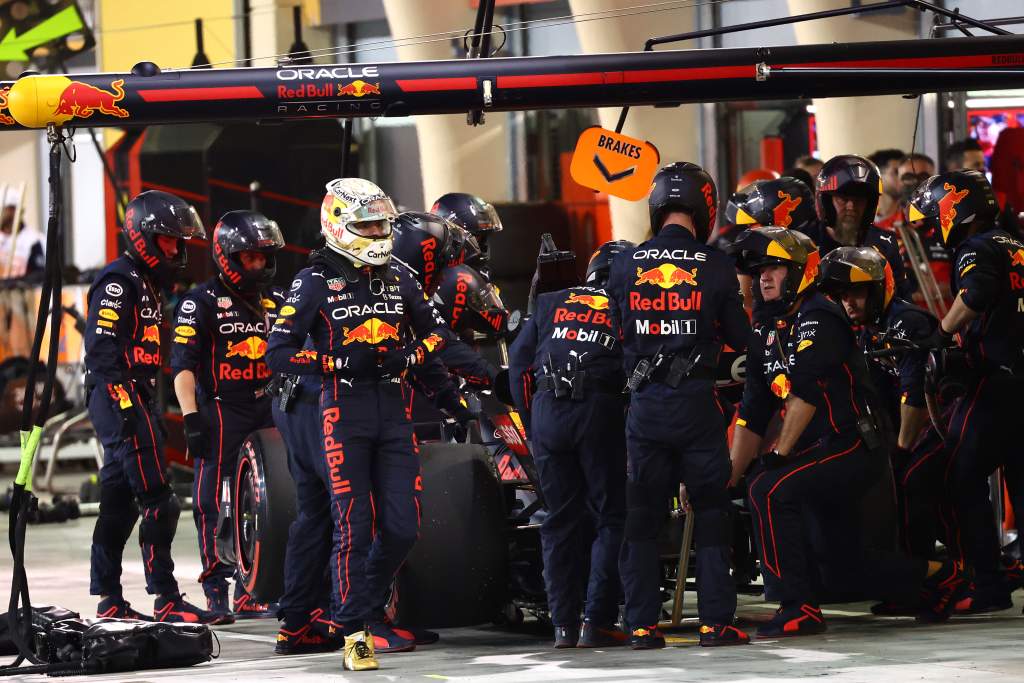Up Next

Red Bull has corrected the problem that caused its double-DNF late in the 2022 Formula 1 season opener, and confirmed it was caused by a lack of fuel pressure.
World champion Max Verstappen slowed from second place with just over three laps to go of the Bahrain Grand Prix and crawled into the pitlane.
Team-mate Sergio Perez retired on the final lap while running third after his rear wheels seized as the engine suffered the same fuel starvation as Verstappen’s and spun him at Turn 1.
Red Bull has said ahead of the Saudi Arabian Grand Prix: “Both cars suffered from a lack of fuel pressure last weekend.
“The correct amount of fuel was in both cars, but a vacuum prevented the pumps from drawing fuel and delivering it to the engine.
“We’ve taken the necessary steps to correct this issue and we expect no problems this weekend.”

Red Bull’s statement appears to confirm what The Race’s Mark Hughes wrote in his Bahrain GP analysis.
This problem would only emerge when the cars were running low on fuel and the initial suggestion after the race was that Red Bull was unaware it had a potential issue because it did not run its tanks that low in pre-season testing.
“Fuel cavitation tends to occur as the last dregs of fuel are being pumped around near-empty tanks,” Hughes wrote.
“The fuel is heavily sloshed around because of the loads being fed into the car and no matter how well-designed the tank’s baffling system, the temperature of the fuel increases when this occurs.
“At a certain point of temperature the fuel begins to vaporise and there will be a vapour lock in the pump, the fuel pressure dives and the pump is briefly pumping fresh air.
“The sudden load changes as the system pressurises and depressurises (together with the excess heat inside the pump from the vaporising fuel) will tend to damage the pumps and eventually they can no longer feed fuel to the engine.
“The E10 fuel introduced this year runs at a higher temperature than the full fossil fuel previously used and so the cavitation threshold has changed.
“Only those teams with enough preparation time to do full race simulations in testing, including running the tanks almost dry, found this out.”




